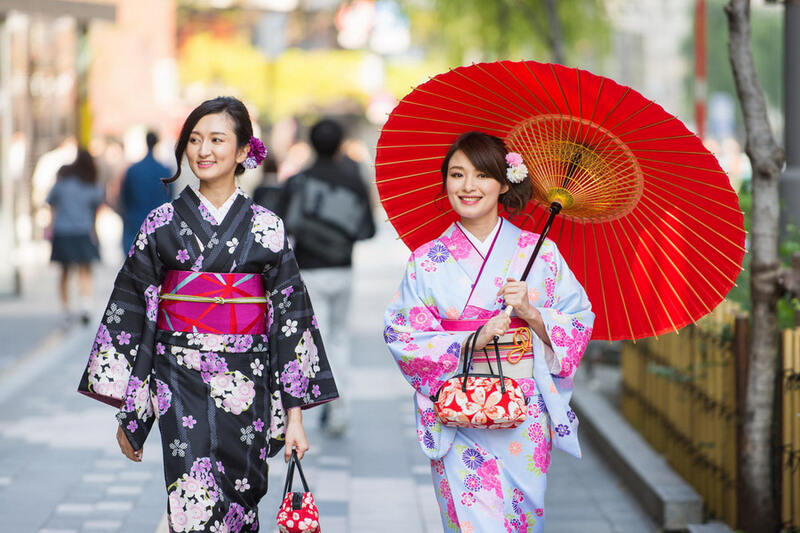When someone decides to go on a trip to Japan, they should think about what clothes to bring and how those clothes might be seen by the people living there. Japan is known for its strong cultural customs, so knowing these can help you have a good time during your visit. This article will give a necessary understanding of why tourists need to be careful with the clothes they pack in their suitcases when traveling here. This ensures that all experiences are respectful and fun.
Understanding Japans Cultural Norms Around Clothing

A special combination of old and new culture characterizes Japan, which also applies to how people dress. In contrast to Western countries where fashion frequently highlights personal expression, Japanese clothing norms tend to focus on modesty and suitability. Tourists must be aware of these cultural expectations because some attire could be viewed as disrespectful or not fitting. For instance, clothing that is excessively showing or has disturbing images may not be appreciated. Knowing these standards will help in dressing appropriately and with cultural respect during your journey.
- Shoes Matter: Always remove shoes when entering a Japanese home or certain traditional settings. Wearing clean, neat socks is a must.
- Avoid Flashy Colors: Bright, bold colors might be considered too attention-grabbing in certain settings, so opt for muted tones.
Avoiding Offensive Text and Symbols on Clothing
A rising style in Western fashion is the use of Japanese letters and words on clothes like sweatshirts and t-shirts. Such items might be trendy where you come from, but wearing them in Japan could have unexpected outcomes. If you are not very good at speaking Japanese, there is a chance that the writing on your clothes might be taken wrongly or seen as rude by people from this place. Sometimes, a phrase that appears harmless may have a different meaning. Likewise, clothing having Chinese characters should be handled carefully. Japan uses three writing systems and one of them is largely based on Chinese characters. This means a phrase on your shirt could carry an entirely different significance than what you meant it to be. For added caution, it is wise to not wear clothes that have writing or symbols on them unless you are sure about their understanding.
- Beware of Kanji: Kanji characters can have multiple meanings, so double-check their interpretation before wearing them.
- Context Is Key: Some symbols may carry historical or cultural significance, which could be misinterpreted without proper context.
The Importance of Modesty in Japanese Culture
Modesty is a very important aspect of Japanese culture, especially in terms of dressing. Visitors from other countries might notice that certain types of clothes that are regarded as normal or acceptable in their own country could be seen as too revealing and inappropriate by local standards here in Japan. For instance, putting on tops with deep cuts, short skirts or very tight outfits may attract attention you don't desire and could be considered disrespectful - particularly so if it happens within more traditional regions or religious places. Think about the clothes you bring along This does not signify you must change your style; instead, it shows that being more considerately dressed will assist in blending with local manners and prevent any cultural missteps.
- Shoulder Coverage: Sleeveless tops may be frowned upon in certain settings, so bring a light cover-up.
- Public Baths: In onsen (hot springs), modesty is critical, and swimwear is usually not allowed in communal baths.
Respecting Traditional Attire and Settings
Even though Japan is a modern nation, it still values its traditional culture greatly. This can be seen in the way people dress, particularly during certain occasions. For instance, when you go to temples and participate in old-style ceremonies it's expected that you dress modestly and show respect. This could entail wearing clothes with long sleeves, not using loud or vivid colors, as well as making sure your attire appears tidy and fresh. Even when you are in a less formal situation, such as visiting a traditional tea house or staying at Ryokan (which is an old-style Japanese inn), it's still good to dress with respect for culture and place. So, put some modest clothes into your bag that can be used for various occasions and are suitable for more traditional dress codes.
- Kimono Etiquette: If you choose to wear a kimono, make sure its tied correctly, as improper tying can have different connotations.
- Temple Visits: Cover tattoos if possible, as they are often associated with organized crime in Japan.
Climate Considerations and Appropriate Clothing Choices
The climate in Japan is very different based on the time of year and area you visit, so it's crucial to pack clothes that fit the local culture and are also suitable for weather conditions. During summer, Japan can sometimes get hot and humid. You may feel like wearing less or more revealing clothing because of this heat. However, it is necessary to consider both comfort and sensitivity towards cultural norms by opting for fabrics that allow air circulation while still giving proper covering. In winter, especially in the northern parts, it could be very cold so make sure to pack warm items. Some indoor places such as temples might not have heating. Dressing in layers that you can add or remove easily will keep you comfortable and respectful of cultural customs.
- Seasonal Packing: Light layers for summer and thermal wear for winter will help you adapt to Japans varied climate.
- Indoor Etiquette: Indoor heating can vary, so be prepared for cooler temperatures indoors, especially in older buildings.
Understanding Local Fashion Trends

Even as we value the honor of following cultural practices, it is fascinating to recognize that Japanese fashion displays a rich diversity and liveliness with trends often differing greatly from one area to another. In metropolitan locales such as Tokyo, the fashion scene can be quite progressive where you might observe a blend of contemporary and conventional styles. Yet, even in these areas setting trends there remains an overall ethos focused on modesty and suitability. Ahead of packing, you could think about checking the present local trends in places where you plan to go. This might assist you to fit in better and also improve your journey by participating in Japan's lively fashion culture in a manner that is respectful as well as fun. When it comes to clothes, a good tip for any travel is to bring along versatile items that can be mixed and matched. In Japan, people often wear simple yet stylish outfits that are comfortable but still maintain an elegant appearance.
- Local Influence: Fashion in cities like Kyoto might lean more towards traditional attire, while Tokyo embraces modern trends.
- Streetwear Insight: Tokyos Harajuku district is a hotspot for unique street fashion but still adheres to unspoken modesty norms.
Conclusion
To pack for a trip to Japan, it is not enough to only think about the weather. A sensitive and considerate approach towards culture, along with respect for local norms must also be considered. You should be careful about the clothes you carry, particularly those having text or symbols on them. Make sure your outfits are modest and suitable for different places so you can prevent possible misinterpretations and travel with self-assurance. Japan appreciates balance and consideration, so your careful packing method will help give a good learning journey experience in this country.







